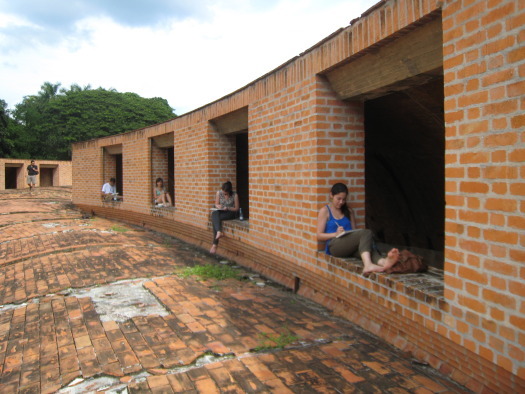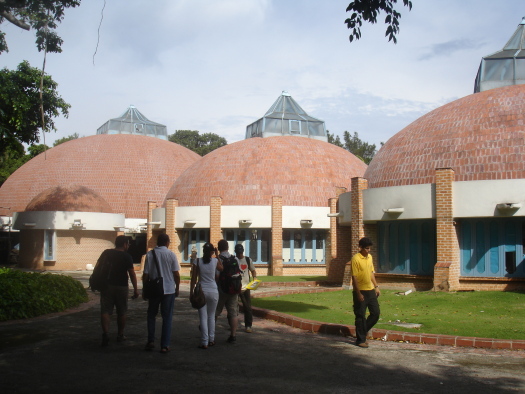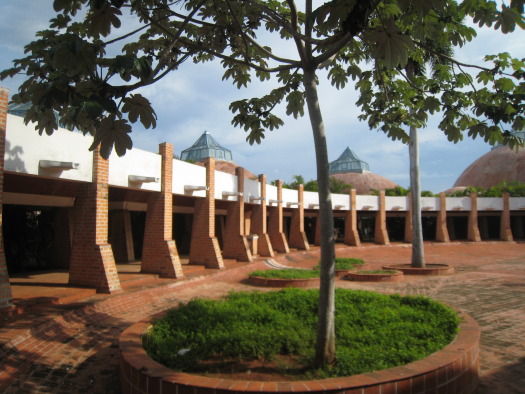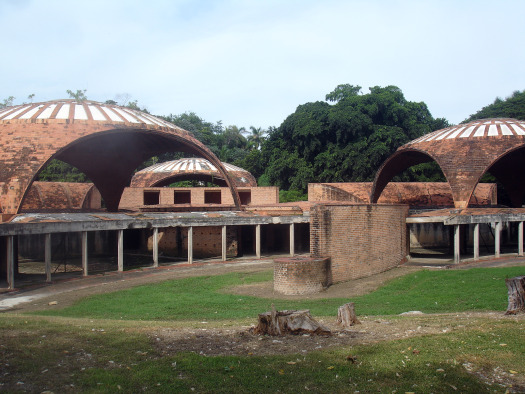
Studying Abroad: Cuba
Traveling abroad is essential to furthering one’s architectural education and career. It enables designers to approach design with a diverse outlook and revamps one’s creative abilities. I had the opportunity this past September to travel to Havana, Cuba with my studio class from Boston Architectural College. The course has students learn about Cuba’s history and culture to ultimately design a ferry terminal in Regla, Cuba. Each solution to the design problem will propose a definition of syncretic architecture as it applies to Cuba, and it will show a set of building designs which use this definition as the term of criticism for the solution. Syncretic is defined as the amalgamation of different religions, cultures, or schools of thought. Prior to traveling, each student produced artwork exploring syncretism in response to various elements of Cuban culture. Studying Cuba prior to traveling allowed us to develop our own preconceptions concerning Cuba and its people. These preconceptions were eventually challenged upon visiting Havana.

We traveled to Cuba for ten days and stayed in the historic Havana Vieja neighborhood. Being in the oldest part of Havana meant that we could easily explore Cuba’s oldest spaces. During our first few days in Havana Vieja we visited and sketched plazas and significant buildings. Our professors encouraged us to sketch as much as possible in the hopes of identifying syncretism in Cuba. When walking around Havana, I was immediately surprised by its vibrancy. The streets were alive with music, dancing, and conversation. People socialized in the streets day and night while others observed from balconies up above. I was also surprised by the local kindness and hospitality. One of my preconceptions was that Cubans are aggressive towards Americans; needless to say I was mistaken. The Cubans I met were welcoming and kind-hearted and were anxious to hear about our trip. Politics rarely came up in conversation but when it did, it was never antagonistic.

Perhaps the most rewarding portion of our trip was visiting the National School of Art. We were given permission to spend two full days at the schools to sketch and meet with art students. These schools were commissioned by Fidel Castro and Che Guevara shortly after the Revolution and reflect the optimism present during its early years. Once the Revolution changed, funding and construction for the school stopped, leaving four out of the five schools unfinished.

We spent the first day visiting the School of Plastic Arts and the School of Dramatic Arts and the second seeing the School of Ballet and the School of Music. Roberto Gottardi, architect for the School of Dramatic Arts, gave us a private tour of his school and discussed his design process. Having the maestro share his school with us was an indescribable experience and something that I will forever cherish.

Now that I am back from Cuba, I have been reviewing my sketches, notes, and photographs in the hopes of defining syncretism. I am now anxious to develop my concept and to eventually design a ferry terminal that reflects my positive experience in Cuba.
-Jimena



